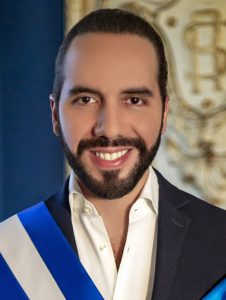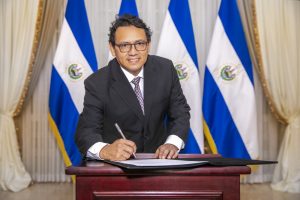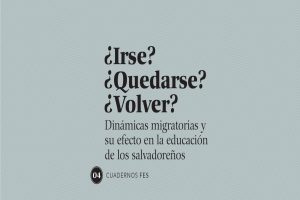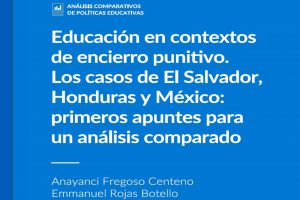El Salvador
INICIO
Países
Indicadores
Recursos

Nayib Bukele
President

José Mauricio Pineda
Minister of Education
# Population
6.486 M
# Students
1.414.326
# Teachers
46.277
# Schools
46.277
Average score in mathematics ERCE
Average score in reading ERCE
Completion and average schooling
Evolution of access to basic resources
Evolution of enrollment
Evolution of inequality
Expense
Evolution of poverty
GDP and growth
Government expenditure on education
Per pupil expenditure
Population by age and gender (2020)
Percentage of poverty by age and gender (2019)
Percentage of extreme poverty by age and gender (2019)
Political context
El Salvador proclaimed its independence in 1841. It is a sovereign state, where the President of the Republic is elected every five years and the 84 members of the Legislative Assembly every three years. The functioning of the political system and the regulation of fundamental rights are established in the 1983 Constitution, which was profoundly reformed in application of the 1992 Peace Accords, ensuring respect for political pluralism and the defence of human rights.
From the signing of the 1992 Peace Accords until the presidential elections of 3 February 2019, the governing political parties were the Farabundo Martí National Liberation Front (FMLN) and the Nationalist Republican Alliance (ARENA). However, this situation changed after the victory of Nayib Bukele, who broke the traditional two-party system. The president was elected for a four-year term (2019-2023).
Economic and social context
The population is 6,453,553 inhabitants (2019). The official language is Spanish, but there is also Nawat, Lenca, Pipil, Q’eqchi, Cacaopera and Nahautl.
GDP growth in El Salvador reached 2.3 per cent in 2019, but the country has registered persistently low levels of economic growth. Despite this, El Salvador has become a more egalitarian country in recent years, with the second highest level of equality in Latin America and the Caribbean. The country has high exposure to the risk of adverse natural events, including earthquakes and volcanic eruptions. It is also highly vulnerable to the impacts of climate change, including increased floods, droughts and tropical storms.
Educational context
The Education Law (Decree No. 917) passed in 1996 establishes that the education system is organised around two modalities: formal education and non-formal education. Formal education is provided in authorised educational establishments. The levels are pre-school, kindergarten, basic, intermediate and higher. Non-formal education is that which is offered with the aim of completing, updating, supplementing knowledge and training in academic or work-related aspects. It is not structured in levels and grades. It is systematic and responds to the short-term needs of individuals and society.
Educational establishments may be official or private. The former, in addition to the state contribution via the national budget, can count on the voluntary contribution of families. Private schools offer formal education services with their own resources or may be subsidised (those that are not-for-profit and comply with the coverage and quality strategies promoted by the Ministry of Education).
Source:
SITEAL, El Salvador (2019): https://siteal.iiep.unesco.org/sites/default/files/sit_informe_pdfs/el_salvador_25_09_19_0.pdf
Banco Mundial: https://www.bancomundial.org/es/country/elsalvador/overview
Oficina de información diplomática, Ministerio de Asuntos Exteriores y Cooperación: http://www.exteriores.gob.es/documents/fichaspais/elsalvador_ficha%20pais.pdf
Photo credit: GPE KIX
Related content
Below, you will be able to identify strategies, research, innovations and country assessments.

¿Irse? ¿Quedarse? ¿Volver?: Dinámicas migratorias y su efecto en la educación de los salvadoreños
Read More »Find more strategies, research, innovations and evaluations by clicking on see more resources.
Select Indicators
Learn more about the country and the region!
Select and visualise different dimensions, variables, indicators and countries by scrolling through a time range of 20 years, which you can download and share.

